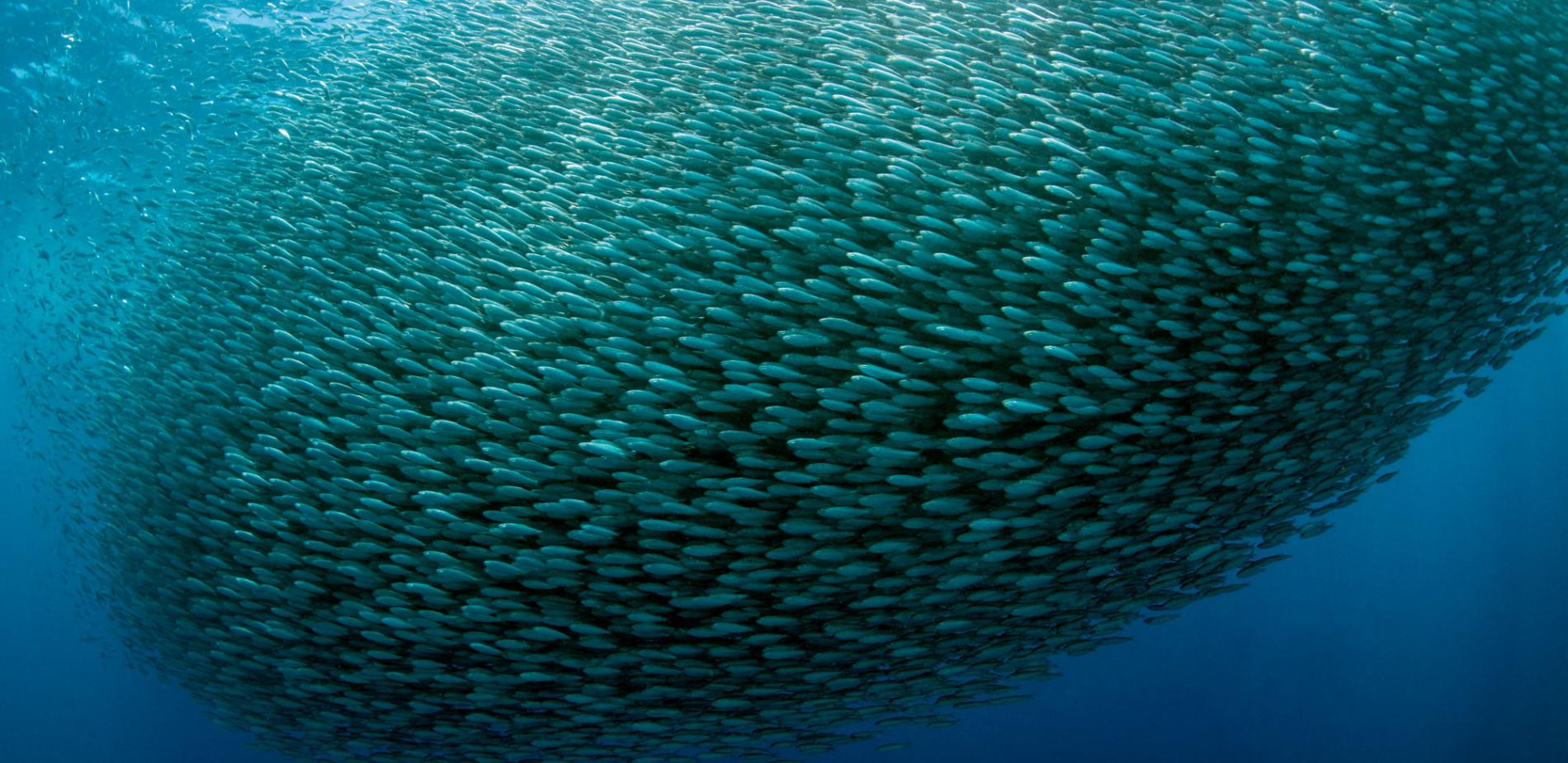
Counting fish to prevent overfishing
How can we continue eating fish without depleting the resource? For the answer, we have to go searching beneath the surface of the sea. So let’s board the research vessel, the Thalassa, together with scientists from IFREMER.
Report by Cécile Dumas - Published on
Is the sea impossible to measure as a resource?
How many herrings, mackerels, skates or sea bass are there? Are there more or less than in previous years or decades? Are the fish getting bigger or smaller? How many will there still be next year? These are the kinds of questions that challenge the minds of scientists at IFREMER, the French national institute for ocean science and technology. Why? In an effort to guide fisheries management.
Every year, nearly 90 million tonnes of fish and shellfish are caught worldwide, including 4 million in the European Union (EU). Over 13 million tonnes are consumed across the 27 countries of the EU. Humans have long considered the sea to be an inexhaustible source of food - as fertile as it is unfathomable. And yet there have been warnings, followed by disasters which have laid bare the limits of this invisible resource, and the risks of unchecked exploitation. The most infamous case is the collapse of Newfoundland’s cod population in the late 1980s due to overfishing—a stock that, even after forty years of industrial fishing restrictions, has yet to recover.
To avoid reaching these tipping points, it is vital to know what the status of fish populations is – i.e. their ‘ stocks ’ –, their composition and their trends. Scientists must not only quantify but also determine the age and sex of individuals... These are challenging tasks to accomplish at a distance. So for sampling purposes, they have to head out to sea. Welcome aboard the Thalassa, for a carefully planned trip in the English Channel and the North Sea.
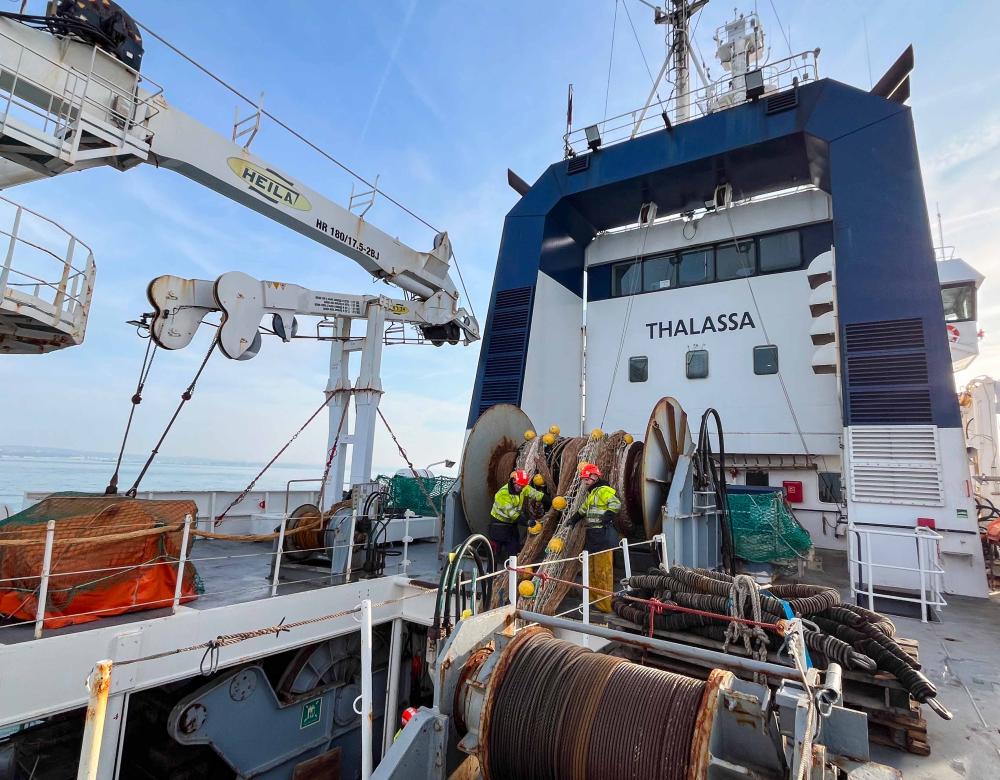
Aboard the Thalassa for the IBTS 2025 campaign
Every winter, the oceanographic vessel Thalassa leaves Boulogne-sur-Mer port for a 20-day mission in the English Channel and North Sea, led by IFREMER. Code name: IBTS for International Bottom Trawl Survey. Seven countries are involved in this campaign to monitor the communities of fish caught in this zone. Some fifty professionals in all, including scientists and sailors, work aboard this 75m-long vessel of the French oceanographic fleet. According to a strict protocol, samples are taken at the same periods in the same zones. Other campaigns are carried out in the Atlantic and the Mediterranean.
Fishing for data
From the bridge, the captain gives the go-ahead for the bottom trawler to be released into the water. Some twenty minutes later, another signal triggers its return to the surface. On the deck, the sailors steer the operation, three times a day, in a different zone each time. To assess fish stocks, the only technique available involves catching the widest possible variety of species in the net. The use of exactly the same protocol over the past thirty years is an advantage, as it means that long-term comparable data exists. This data tells us that populations of herrings, which were overfished in the 1970s, plummeted before picking up again, but the number of juveniles remains very low, which is puzzling researchers.
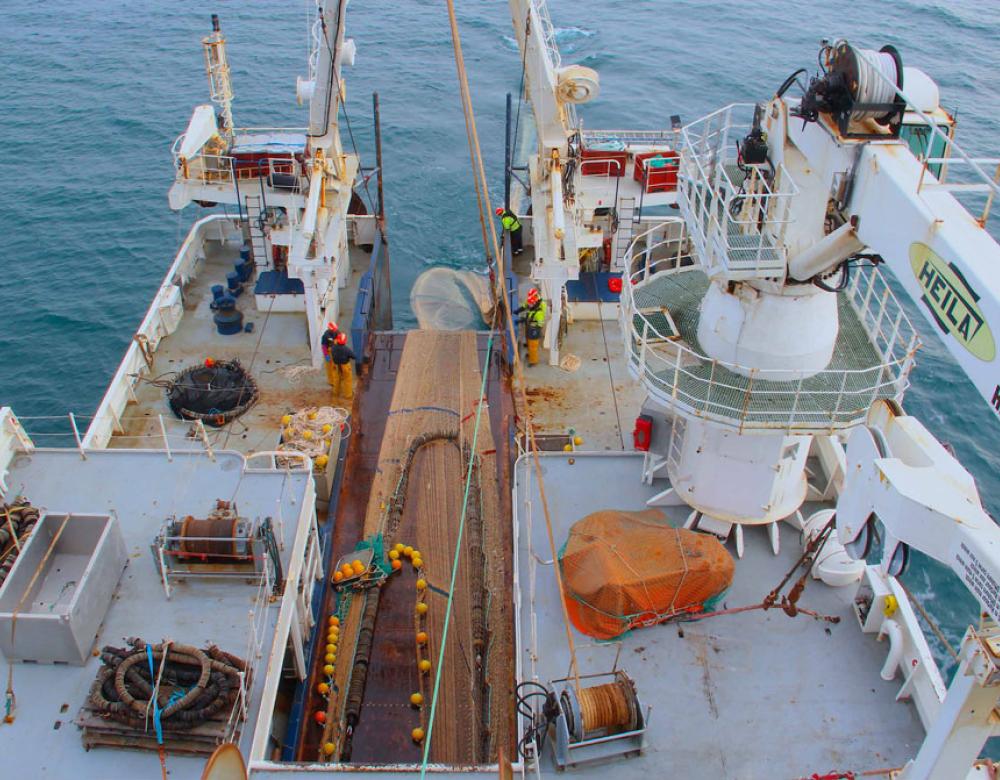
From sea-based collection to fishing quotas
Sea campaigns the likes of IBTS are one of the links in a long chain leading to fisheries management at European Union level. This scientific work is crucial for establishing total allowable catches, which enable fish stocks to rebuild.
To properly assess the quantities of fish and shellfish, IFREMER collates different types of information. Surveys are conducted among fishing vessels, once on land, to calculate their activity figures on a monthly basis. Auction measurements are also performed. Other observers go aboard fishing vessels to estimate total catches, i.e. not only what is landed and sold, but also what is thrown back into the sea (undersized fish or species that are not of commercial interest, etc.). All this data is necessary to gain an idea of the structure of the population of each species, in terms of size and age, and to estimate the quantity of juveniles as well as the natural mortality rate – from disease or predation – and fishing.
Once the lab-based analyses have been performed, the data is entered into an international database and used to run stock assessment models, track population trends and deliver short-term projections (1 to 3 years). The goal is to define the quantities that could be fished the following year without jeopardising a population’s ability to rebuild.
This scientific expertise is submitted in the form of an opinion to European policymakers who, at the end of long negotiations, divide the total allowable catches between Member States in the form of fishing quotas.
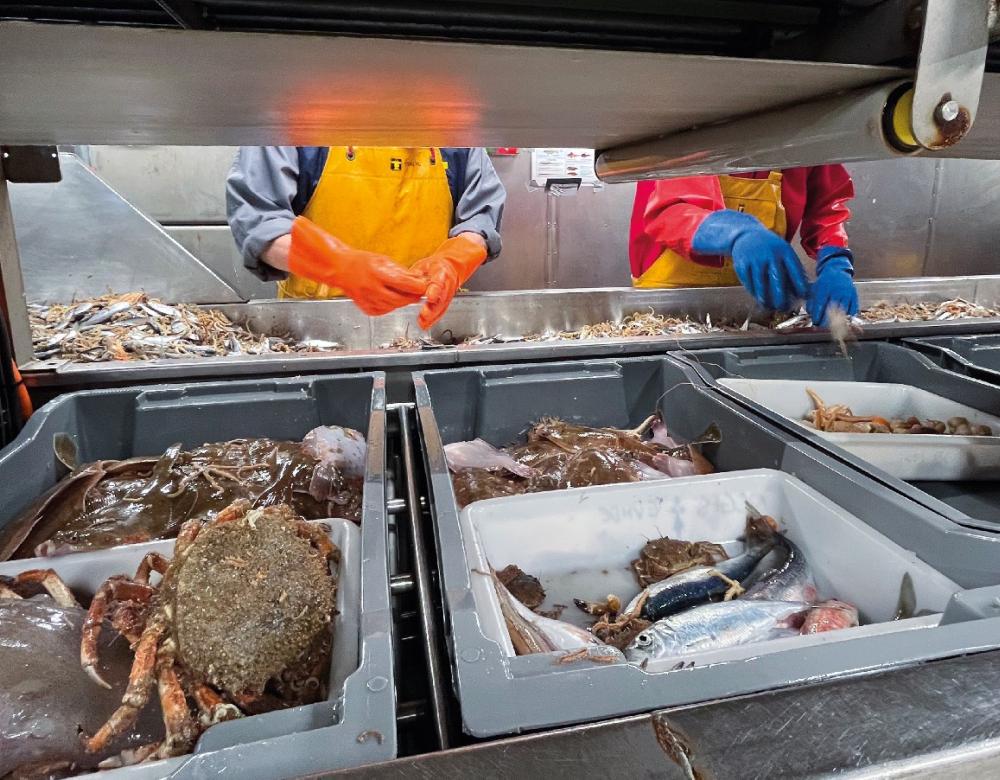
Examining the fish closely
There is always some kind of sorting facility on trawlers, but the Thalassa’s is quite specific. The first step is conventional: the catch is tipped via the open hatch onto the deck and conveyed on conveyor belts. A dozen IFREMER scientists pay close attention to this flow and sort the fish according to species. Whilst it might be fairly straightforward to tell a plaice and a mackerel apart, it takes more careful observation to distinguish a sardine from a herring! Some species are subject to special protection, such as skates, dogfish and sharks. Hauled aboard alive, the fish are placed immediately into a tank, weighed and measured, before being returned to the sea as quickly as possible.
Sorting, measuring, weighing
The measuring begins with special attention paid to fish of commercial interest caught in the English Channel and North Sea: whiting, cod, haddock, Norway pout, herring, sprat, mackerel and plaice. This second, more unusual step follows a precise international protocol. The quantity of fish caught per species can be calculated via overall weighing. Then individual measuring is carried out, around tables equipped with connected scales and rulers. Based on a given size and weight, samples are necessary to determine the sex, sexual maturity and diet. Such data is vital for establishing population trends.

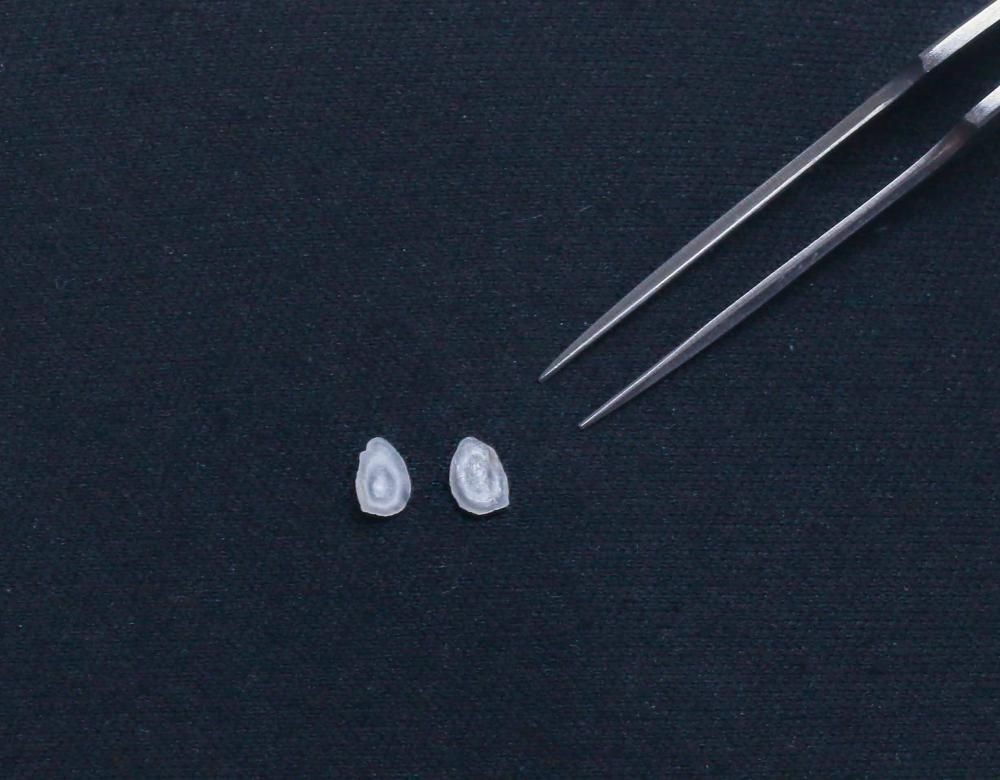
Otoliths, the ‘black boxes’ of fish
Otoliths are tiny calcium carbonate structures found inside a fish’s inner ear. They grow throughout a fish’s life and provide a sense of balance in particular. For scientists, they provide a similar record to the rings of a tree trunk: one translucent layer and one opaque layer represent one year of growth for the fish. Studying otoliths is therefore one way to estimate a fish’s age, establish a link between its size and age and work out its speed of growth. It then becomes possible to outline the age structure of a population: is it balanced between young and old individuals, or is there an imbalance? The population will be managed differently depending on the answer to that question.
Marine biodiversity under threat
Fishing is not the only human activity to have an impact on the ocean: myriad other factors also disrupt the marine environment. For instance, the building of ports or use of resources such as oil or sand destroy precious habitats. Toxic chemical contaminants – mercury or persistent organic pollutants – accumulate all the way up the food chain to the final consumer: humans. Nitrates from agricultural fertilisers cause ‘ blooms ’, outbreaks of microalgae which use up the oxygen in the water to the point of creating ‘dead zones’.
Commercial maritime traffic is inadvertently introducing invasive exotic species into the sea, not least via the dumping of ballast water from ships, which is leading to biodiversity loss. The rising carbon dioxide emissions in the atmosphere are also disrupting the balance of the oceans, which absorb this surplus CO2 and become more acidic. Finally, the oceans are suffering from rising water temperatures caused by global warming, and this is taking a toll on habitats. How will marine species adapt? Will some fish have to migrate further north, or live at greater depths? How will ocean life respond to these cumulative stress factors?
Plenty of research projects are endeavouring to address these questions. At IFREMER’s base in Boulogne-sur-Mer (on the North coast of France), scientists are analysing the effects of climate change on herring or sardine larvae and embryos, for the development of these fish and the future of their populations depend on these first stages of life.

Prey and predators: an interdependent relationship
Although stocks are assessed species by species, scientists need to understand how these species interact together, starting with predation: who eats who? Mackerel will become endangered if the species it preys on suddenly plummet. Two species sharing the same food are in competition: one will be affected if the other becomes more abundant. This all forms a complex chain, also involving species which are not fished and are therefore not listed. Samples are therefore taken from the stomachs of some 15 species of fish to find out what they eat, piece back together interactions between species and study the ecosystem as a whole.
To round off the stock-taking
circles’. As soon as it is spotted, it is noted on the computer. From sunrise to sunset, stationed at the bow of their boat, two observers have their eyes trained on the sky and surface of the sea, on the look-out for the appearance of birds and marine mammals. Thanks to the data collected, the presence and abundance of species can be identified, and trends in their numbers can be monitored. In this way, an additional link in the ecosystem is documented. This work is coordinated by the Pelagis observatory (CNRS/La Rochelle Université), whose volunteers join each of IFREMER’s fishing campaigns.
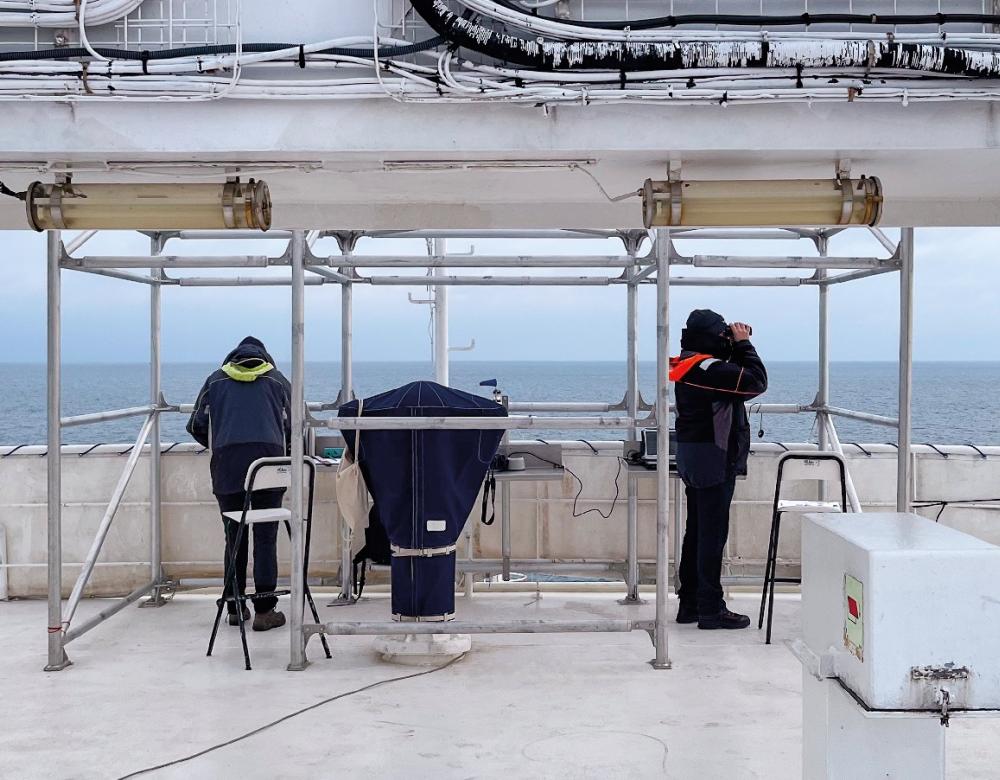
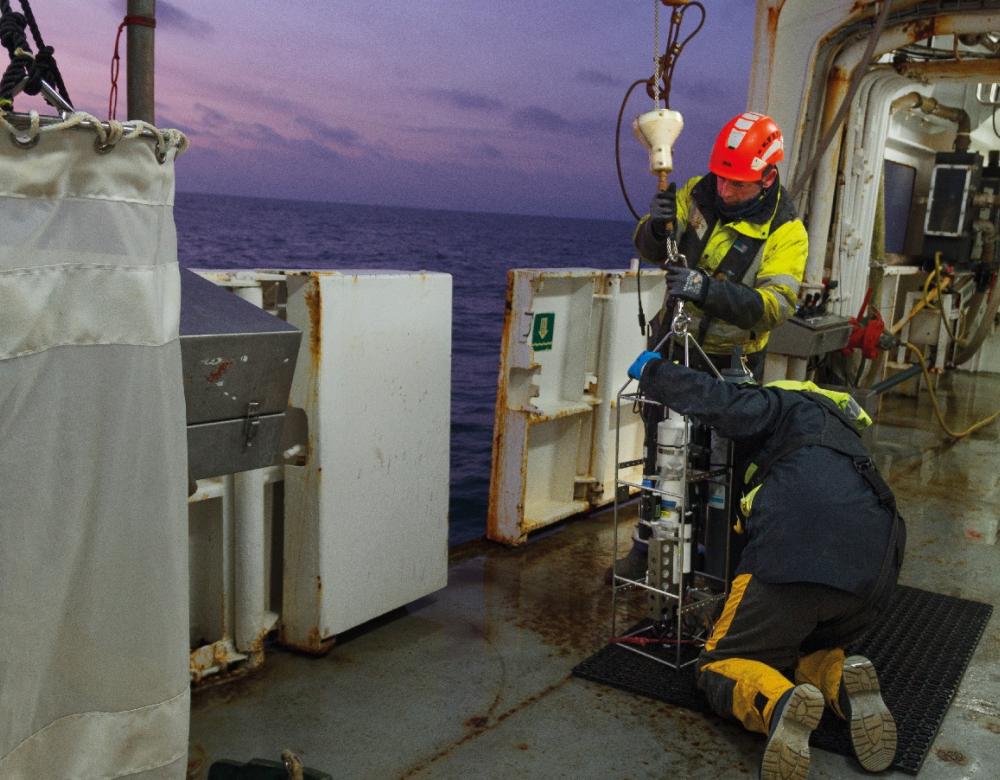
Hydrological analyses, day and night
The Thalassa’s on-board hydrology lab works around the clock. Various tools are used to collect water and plankton at different depths. Alongside the analysis of zoo- and phytoplankton, measurements are also taken regarding temperature, salinity, acidity (pH), oxygen levels and chlorophyll concentration, to learn more about the environment in which fish live. This data collection is in line with the ecosystemic approach developed by scientists as part of these campaigns. Records of waste are also kept: at the hydrology lab and in the sorting facility, pieces of plastic, rope, string and other rubbish are counted every day.
What does the future of fishing look like?
‘Conserve and sustainably use the ocean’: this is the goal of the third United Nations Ocean Conference organised in Nice in 2025 by France and Costa Rica. We have our work cut out: in the twentieth century, total catches fell tenfold, with rates worsening since the 1950s. Still today, nearly 38% of global fish stocks are overexploited, according to the Food and Agriculture Organization of the United Nations (FAO).
Various measures could be adopted and expanded, however, including limiting vessel capacities, prohibiting the most destructive practices and banning fishing in nursery grounds where juveniles are growing, as well as marine protected areas. The quota policies adopted since the 1980s have also proven to be effective. In Europe, fishing pressure mounted until the 1990s. But thanks to the introduction of restrictive quotas in the early 2000s, fish stocks have been able to rebuild, especially in the Atlantic Ocean. That said, these regulations do not apply to all seas worldwide, and the situation in Africa and Asia is still of immense concern.
Today, the principle of ‘ maximum sustainable yield ’ is given precedence in fisheries management: i.e. the maximum catch that can be taken without impairing a stock’s ability to replenish itself. But is this standard enough to define sustainable fishing at a time when climate change is further undermining the delicate balance of ecosystems? Experts are already advocating for an ‘under-exploitation’ of marine resources to safeguard their resilience.
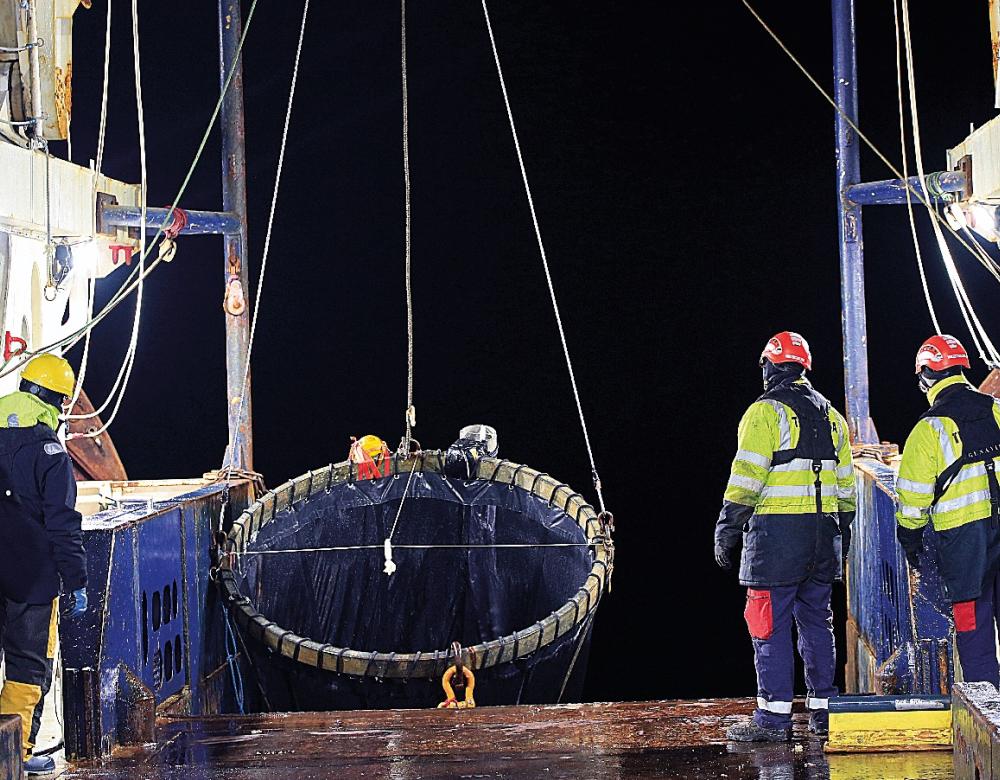
Future generations under the microscope
One of the aims of the IBTS campaign is to estimate the stock trends for herring, a key species of the English Channel and North Sea. It is not enough just to study the adults in this instance – future generations, i.e. larvae, must also come under the magnifying glass. Herring breed in this zone in wintertime, so that the larvae emerge right when the plankton they feed on is most abundant. During the campaign, a net fitted with a collector is therefore dropped into the water several times a night, the best time for catching larvae, which are then sorted, counted and observed.

Thank you to the Thalassa’s crew and the IFREMER team leading the IBTS 2025 campaign, particularly Pierre Cresson for his role as scientific adviser

